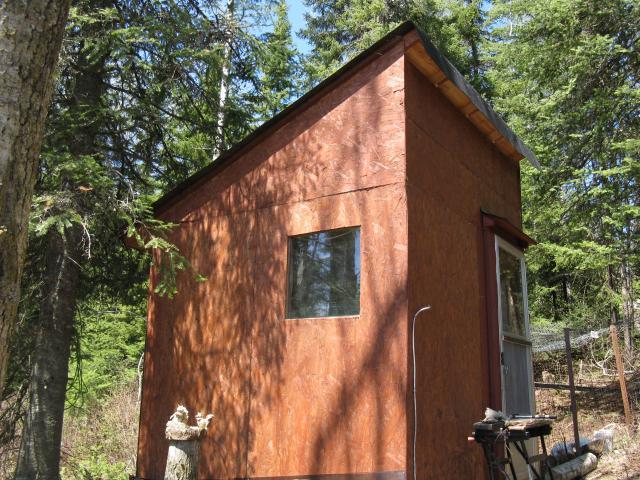Hi - I am going to first apologize for highjacking your thread ...but I have a few questions about "how cold is cold" too
We live in Northern Ontario (about four hours north of Duluth) and we woke up to over an inch of snow this morning and have had frost for about three days ago. Lovely! Oh and of course it is a long weekend and Thanksgiving for us.

It is -3 (27F) right now.
We built our coop with winter in mind. It will often be > -20C (-4F) and with the wind chill it can even reach >-35C (-31F).
It is about 6'x7' and we used vapour barrier/insulation/plywood. The roof is also insulated. We have one window facing south - that doesn't open. We have two round vents at the north side of the upper wall for ventilation. We used a wood door and screen door for vent in the summer. They have a little door we slide closed each night to keep them safe.
So what do we need for the girls? Good ventilation and a heat lamp - anything else? What should the temp be inside the coop? We are getting a heated waterer too.
Our run is only metal wire fence on the ground. Can they go outside in the cold? Do they need to go outside (Sorry - may be a totally stupid question but this is our first flock)? If so, what temps are safe?
Any and all advice is greatly appreciated.

We live in Northern Ontario (about four hours north of Duluth) and we woke up to over an inch of snow this morning and have had frost for about three days ago. Lovely! Oh and of course it is a long weekend and Thanksgiving for us.

It is -3 (27F) right now.
We built our coop with winter in mind. It will often be > -20C (-4F) and with the wind chill it can even reach >-35C (-31F).
It is about 6'x7' and we used vapour barrier/insulation/plywood. The roof is also insulated. We have one window facing south - that doesn't open. We have two round vents at the north side of the upper wall for ventilation. We used a wood door and screen door for vent in the summer. They have a little door we slide closed each night to keep them safe.
So what do we need for the girls? Good ventilation and a heat lamp - anything else? What should the temp be inside the coop? We are getting a heated waterer too.
Our run is only metal wire fence on the ground. Can they go outside in the cold? Do they need to go outside (Sorry - may be a totally stupid question but this is our first flock)? If so, what temps are safe?
Any and all advice is greatly appreciated.
Last edited:








